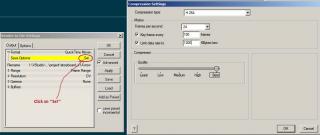-
Posts
4,676 -
Joined
-
Last visited
Content Type
Profiles
Forums
Events
Everything posted by HomeSlice
-
That looks nice! The holds seem too long. I get a little bored after awhile. I would make all of them no longer than 1/2 sec to 1 sec. It also looks like all the bones are set to Zero Slope interpolation. That is good for blocking out the action, but when you are done blocking, I like to switch to "spline" interpolation most of the time. You have to selectively change the interpolation on the keyframes that drive the feet. The keyframes that "plant" the feet should be zero slope. All other keyframes can be set to Spline. The default interpolation for bones generally appears to be set to "spline", but when I look in my channel window, they are almost always actually "zero slope". Make sure the *Default* interpolation for your bones is set to "Spline". Open the channel window. Select the "Bones" folder in your Model Shortcut's Chor Action. Click in the Channel Window. [CTRL A] to select everything. Double click in the selection box. A dialog window will pop up. The field labeled "Interpolation" will usually say "Default". Just hit the OK button without changing anything. All the splines in the Channel window should adjust and look much more curvy now. Find the keyframes that "plant" the feet. Select those keyframes and switch them to Zero Slope.
-
Thanks Bruce.
-
Yes that would probably be a good idea, but I'm not applying to Pixar or Dreamworks, just some local studios in the area. I don't even know if they will look at my demo. Almost everyone wants you to be familiar with Brand X or Brand M. I'm hoping that isn't a *literal* requirement I'm hoping they just want you to have the intelligence to be able to get around in a professional grade animation program, and A:M is certainly that!
-
I would imagine importing complex poly models into A:M would take quite a bit of RAM, and you might be running out during the process. You might try opening the task manager, find where it tells you the Available Physical Memory, and watch that to see if you are running out.
-
That looks like a bed fit for a cupid
-
Unfortunately all the decent character animation work I've ever done was for TWO and SO. Before TWO, I didn't even know how to animate a character. Since then I've animated on a few other low budget flicks, but the emphasis on those was on *quantity* and *speed*, not something I really want to show on a demo reel. I've done other types of animation over the years, but this is a character animation reel. So I'm afraid TWO and SO is all I have to draw from...
-
HomeSlice, How do I set up Quicktime to render in the h264 codec. Nothing I can find in the render dialog box would allow me to do so. I don't know how it looks on a Mac, but here is a screenshot from WinXP. After you render the movie in AM, open it in Quicktime Pro and export it with the same settings (from Quicktime Pro), except for audio choose AAC for the codec. This will make the file size even smaller with only a marginal loss in quality. This will be good for quick test renders and for short renders you want to share on the internet. For your final rendered piece, follow Fuchur's advise.
-
Like Robcat says, ultimate control comes with manually animating things. Anything that can possibly be manually animated, even if it is a lot of work, do it manually. It will actually same you some time and frustration. If you really need a simulation, Newton will handle most hard and soft body dynamics. Unfortunately, I do not know of a comprehensive Newton tutorial. Here are some helpful links: http://www.hash.com/NewtonPhysics/ http://www.hash.com/NewtonPhysics/samples.html http://www.hash.com/forums/index.php?showt...0&hl=newton http://www.hash.com/forums/index.php?act=A...st&id=19636 ( PDF File) SimCloth handles cloth. Here is a simCloth tut in pdf format (with a sample project file) http://www.hash.com/forums/index.php?showtopic=29731 Hair can be useful in a wide variety of situations, from actual hair, to feathers, to foliage on plants. Here is a tutorial on hair. http://www.hash.com/forums/index.php?showtopic=29738
-
Awesome tips. Thanks guys! Jimd, you are not offending anyone, at least not me. The people I send this to will probably be much more critical, so I need "real" evaluations. Thanks largento. I had not even considered most of those points. Thanks Robcat for taking the time to look at it on a more granular level.
-
Happy b'day doood.
-
Thank you Myron. After all the hours I've put in, I sure hope I've improved at least a little bit. And THANK YOU for your music in SO!! thank you Spleen. But I'm trying to shorten it down to 2-3 minutes, so I need to cut out some clips. But I'm just not sure which ones to cut...
-
I just clicked on the link and it started downloading. Maybe try it again?
-
Oh yes, make the beams match the style of the windows. That would look better. That looks like a tavern fit for Flemm!
-
I'm working on an animation demo reel. It was all animated in A:M, so I thought the WIP forum would be appropriate. What I have now is about 5 min in length. I've heard that 2-3 minutes is optimal for a demo reel, so I would like to trim it down to that. I would be grateful if you will look at what I have and tell me what clips you like and what clips ... not so much. Here is the link to a low resolution version with frame numbers: http://www.holmesbryant.com/files/video/Ho...Demo_draft1.mov (27MB) Thanks
-
Unless you really need to render huge Quicktime movies with alpha channels, I would suggest rendering to h264 codec and playing with the bitrate until you find a good compromise between file size and quality. For your test renders, limit the data rate to 1200 KB/sec or less. For your final render, render out to individual tga or png frames for best quality and to prevent you from having to rerender that entire sequence if something happens (power outage, crash, whatever). Animation Master can import the image sequence you rendered, add your audio to it and render a quicktime movie with the audio. Make a new Project. Import your image sequence. Import your audio. Make a new choreography. Drag your image sequence onto the camera in the choreography (as a camera rotoscope). Add your audio to the choreography. Render movie. It will render much faster than the original 3D scene because A:M is just processing the 2D images and audio.
-
Also, I understand your preference for the CD. But at $80/year for the subscription, you get 3.75 years of updates for the price of a single CD version.
-
When you order the CD (or the subscription), it will likely come with some flavor of version 15. That is the latest official release. You will want to update that to v15J. Version 16 is still in beta. Many people are already using it, but it is still being tweaked. If you are doing something with deadlines, something you may want to try is installing both v15J and v16 (v16 installs into a different directory, so you can have both installed). V16 comes in 32bit and 64bit flavors, so install the 64bit version if you have a 64bit OS. Then create your assets and animation in v15J. Then copy those files to a new (v16 projects) directory and render them with v16. The reason is that v16 renders much faster. On a PC it is substantial, but on the Mac it is an order of magnitude faster. Plus, a limited version of Netrender is available in the beta that allows you to render animations on two cores of your cpu (or two single core computers) at the same time. Netrender is also handy for setting up a large batch of choreographies to render unattended. Netrender won't speed up the rendering of a single image, however. A single frame will only render on a single core.
-
Yep, those "44s" are pretty impressive!
-
Shouldn't he have a heart shaped bed with red satin sheets?
-
SWEET Powersled! Where can I buy one?
-
Paul, the poignance of your words is deeply touching. Thank you for sharing some of yourself with us over the years. You have become an indelible thread in the fabric of our worlds, reaching out beyond this humble forum. Thank you for that. I do hope you continue to post here for a long time to come.
-
This tut will get you started. http://www.hash.com/forums/index.php?showtopic=31562
-
You definitely have the whole "Sports Center" thing down. Nice render! So each frame rendered in 30-40 seconds? wow. You could cut the total render time down to 2 1/2 hours (more or less) if you have a multi core processor and you render via AM v16 netrender.
-
Not too shabby for a single days work. Congratulations! ... that lady groundhog is a real looker!
-
The prj file crashes both my v15 and my v16 when I try to load it.










